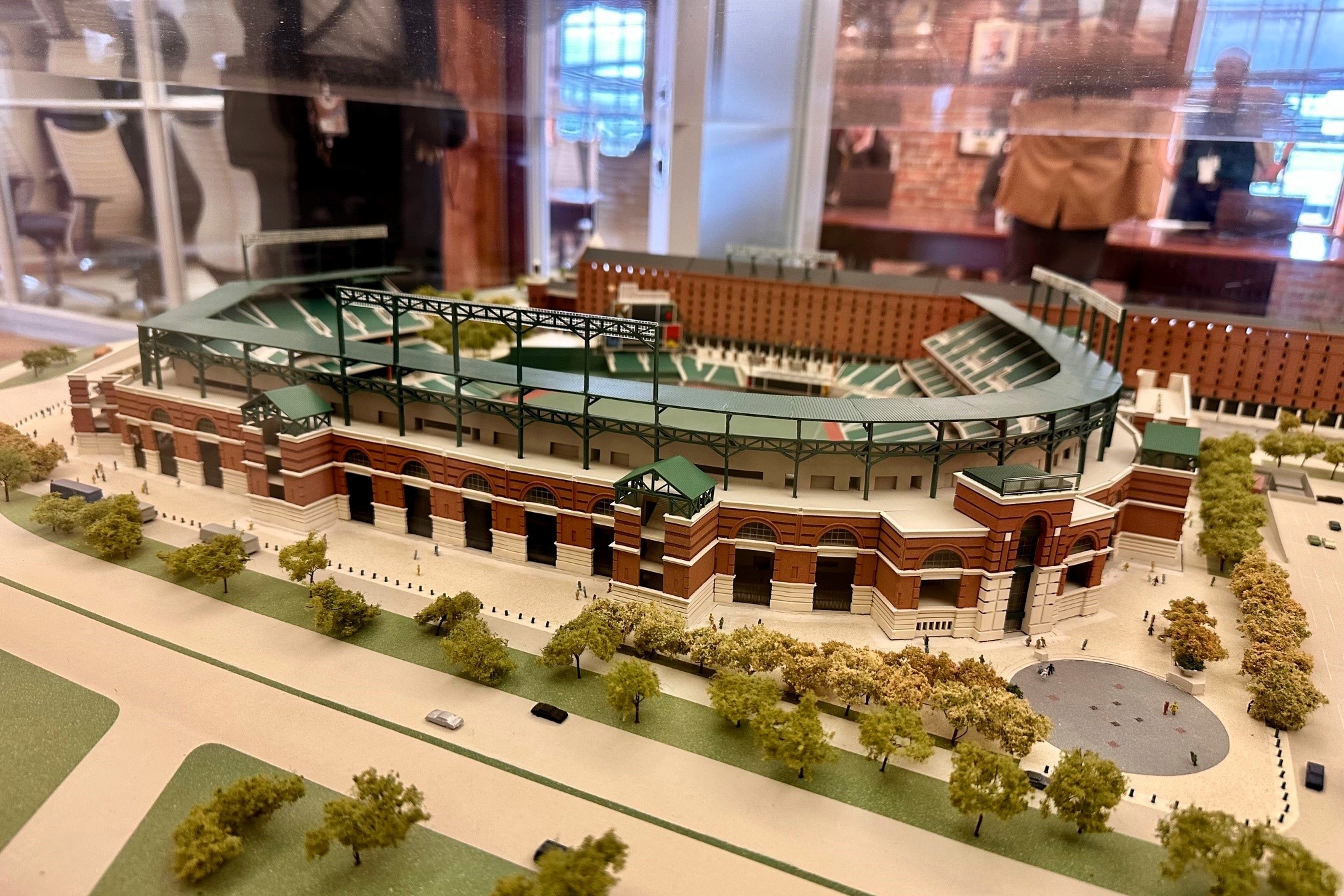Opinion: It’s not too late to talk about public ownership of the Orioles. Now is the time.

By Andy Ellis
The writer is a steering committee member for the Baltimore City Green Party, former co-chair of the Maryland Green Party and an Orioles fan.
Congratulations to Gov. Wes Moore (D), the Maryland Stadium Authority and the Orioles on getting a deal done that ensures the Orioles will play in Camden Yards for at least 15 more years. I can’t wait for opening day.
In August when I first wrote about public ownership of the Orioles I thought a lease would be signed well before the end of the year. But when I went to The Warehouse at Camden Yards on Monday to see the special meeting of the Maryland Stadium Authority, it was clear that fans, taxpayers, and city and state government had been driven right up to the edge of a cliff by the Orioles’ Managing Partner John Angelos.
Currently, there is no good way for cities and states to negotiate with a Major League Baseball owner. MLB owners have an antitrust exemption, a special carveout for America’s pastime in federal anti-monopoly law. Angelos started the negotiations in the bottom of the ninth, with no outs, and a runner at third base.
Angelos is playing a game of chicken. In this game, it is leaked that the billionaire may move a beloved sports team. He denies the team would ever move, but the threat is already there. The curveball is the public money. If Maryland’s taxpayers don’t offer enough, some other state may. This is on full display with the recent relocation drama around the Capitals and the Wizards. In this game, taxpayers pay for the stadium. The billionaire and his family, with congressional protection, profit.
Once the taxpayers take on the debt (like the $600 million approved by Annapolis), the next screw the billionaire team owner turns is the rights to develop land around the stadium and the tax breaks. The deal that was signed on Monday still envisions a development and ground lease deal with the team and the state, it just defers the decision-making around that aspect of the deal for up to four years. If that does not get done in the next 4 years, Monday’s deal could be as short as 15 years.
The development deal and the ground lease will be a tough fight, or else the state and the team would have done it Monday. The next stadium and lease negotiation is going to be way worse, at least for taxpayers and baseball fans. The next time Maryland has to play this game, Camden Yards will be at least 45 years old. Whether in 15 or 30 years, a whole new stadium could be part of the next negotiation. Regardless, the price tag to keep the Orioles here will likely be in the billions of dollars, not the hundreds of millions.
State Senate President Bill Ferguson (D), whose 46th District is home to the stadium, and who may still be president of the Senate in 15 years, showed valuable leadership at the last minute. Now Maryland needs Ferguson to take the next step and bring the issue of public ownership of the Orioles to the General Assembly in the upcoming legislative session.
In a similar moment in 1984, the Maryland General Assembly amended the Baltimore City charter to give the city the power to use eminent domain to take and operate a professional sports team. While it didn’t happen in time to save the Colts, it gave the city of Baltimore a unique power in future negotiations. Now that the lease is signed, it’s a better time than ever to figure out how we pursue public ownership of the Orioles.
Will Major League Baseball fight it? Of course they will. They’ll threaten to let the team move, invoke their antitrust exemption, and smear any politician related to the move as a “socialist.” But they will do this precisely because the threat of public ownership gives cities and states leverage in negotiations with teams, and that in turn threatens the extortion racket that baseball and other sports are running.
The state of Maryland will need to work with the city of Baltimore to develop the legal strategy to take on MLB, work out the finances of the deal, and develop a democratic mechanism for genuine public ownership. Public ownership of sports has a solid history, whether through a model like the Green Bay Packers, the proposal made by the owner of the San Diego Padres in the 1990s, or the way many European football teams work. Baltimore and Maryland have examples to look at and build upon.
Public and fan ownership can spur economic growth and make more economic sense than the pay-to-play system we have now. Public ownership can ensure that teams stay in communities that love them, and provide good stewardship of public money and resources.
The current approach to these deals is bad for baseball, bad for fans, and terrible for taxpayers. Maryland can change the game and lead the way on a new model by expanding the choices available to cities and states around the country. We already have the laws in place to do it. We need politicians and leaders willing to use those laws for the good of all of us.



